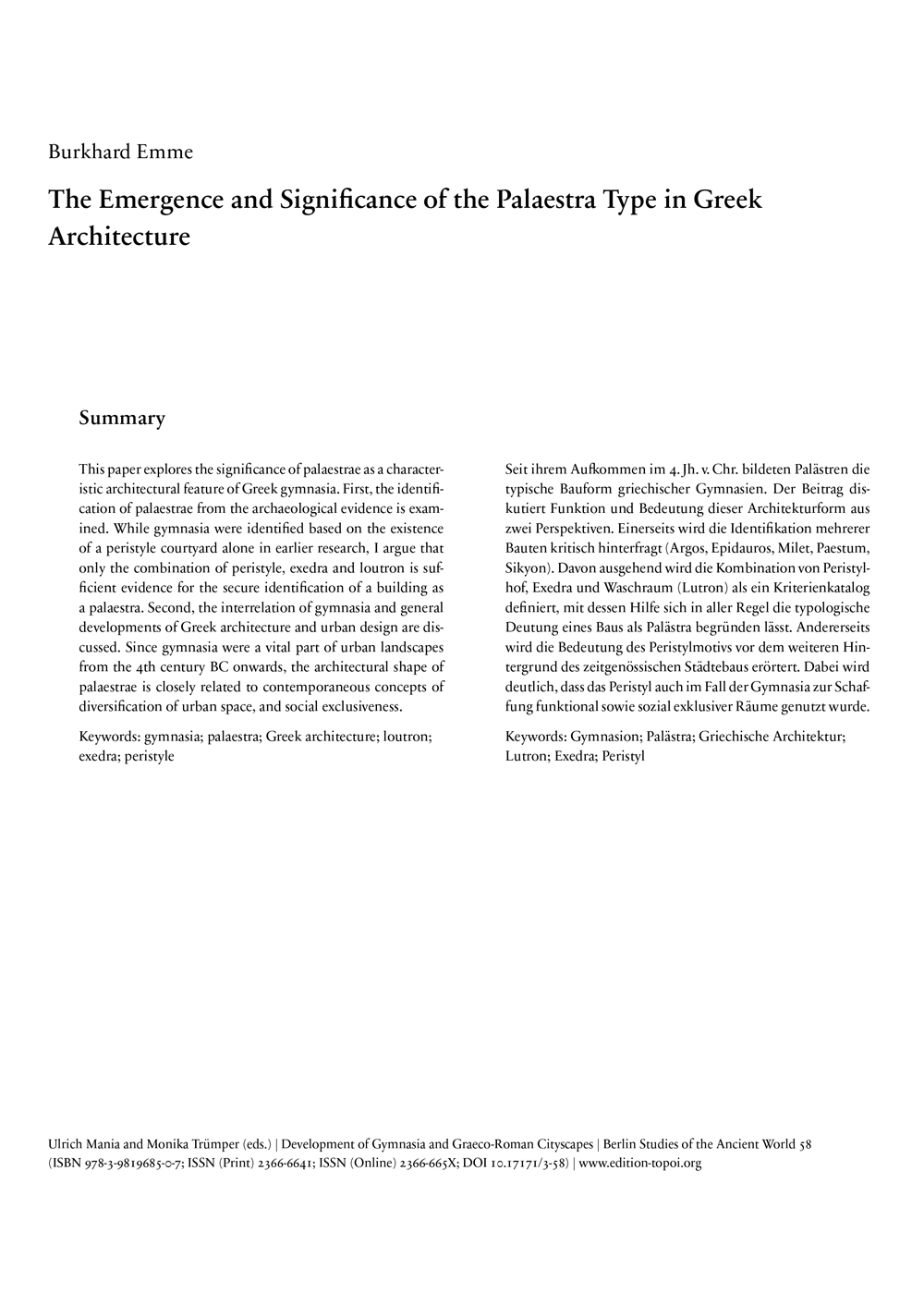The Emergence and Significance of the Palaestra Type in Greek Architecture
This paper explores the significance of palaestrae as a characteristic architectural feature of Greek gymnasia. First, the identification of palaestrae from the archaeological evidence is examined. While gymnasia were identified based on the existence of a peristyle courtyard alone in earlier research, I argue that only the combination of peristyle, exedra and loutron is sufficient evidence for the secure identification of a building as a palaestra. Second, the interrelation of gymnasia and general developments of Greek architecture and urban design are discussed. Since gymnasia were a vital part of urban landscapes from the 4th century BC onwards, the architectural shape of palaestrae is closely related to contemporaneous concepts of diversification of urban space, and social exclusiveness.
Seit ihrem Aufkommen im 4. Jh. v. Chr. bildeten Palästren die typische Bauform griechischer Gymnasien. Der Beitrag diskutiert Funktion und Bedeutung dieser Architekturform aus zwei Perspektiven. Einerseits wird die Identifikation mehrerer Bauten kritisch hinterfragt (Argos, Epidauros, Milet, Paestum, Sikyon). Davon ausgehend wird die Kombination von Peristylhof, Exedra und Waschraum (Lutron) als ein Kriterienkatalog definiert, mit dessen Hilfe sich in aller Regel die typologische Deutung eines Baus als Palästra begründen lässt. Andererseits wird die Bedeutung des Peristylmotivs vor dem weiteren Hintergrund des zeitgenössischen Städtebaus erörtert. Dabei wird deutlich, dass das Peristyl auch im Fall der Gymnasia zur Schaffung funktional sowie sozial exklusiver Räume genutzt wurde.

